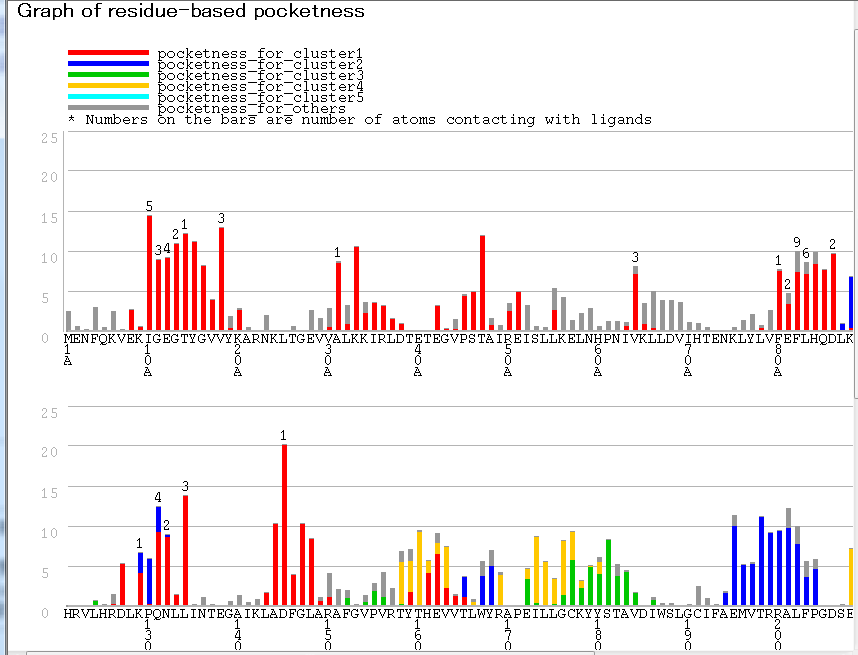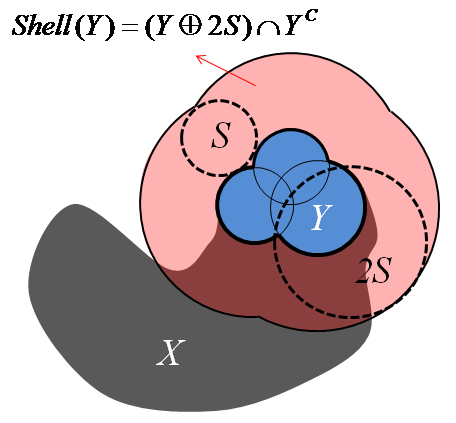


The measure pocketness(Y) indicates both the size and depth of a pocket
around the region Y(such as residues), which is defined as follows:

where a shape Y is a part of a protein shape X.
The value R(Ip(x)) is the minimum pocket radius.
The set Shell(Y) is an accessible shell volume defined in the bottom figure.
The measure pocketness has the maximum value of 100% only when all of the points in the accessible
shell volume Shell(Y) are pockets defined by the smallest large probe with the radius
R(1). A residue in a deeper and and larget pocket has a larger value of pocketness.
If all of the points around the focused residue Y are in the deepest pocket, the pocketness
becomes 100 %. Otherwise, the value of pocketness is proportional to the sum of the inverse of the radius
R(Ip(x)):
a point in a deep pocket has a high 1/R(Ip(x)) value,
and a point in a shallow pocket has a low 1/R(Ip(x)) value.


Back to help page
Lab for Structural and Functional Bioinformatics